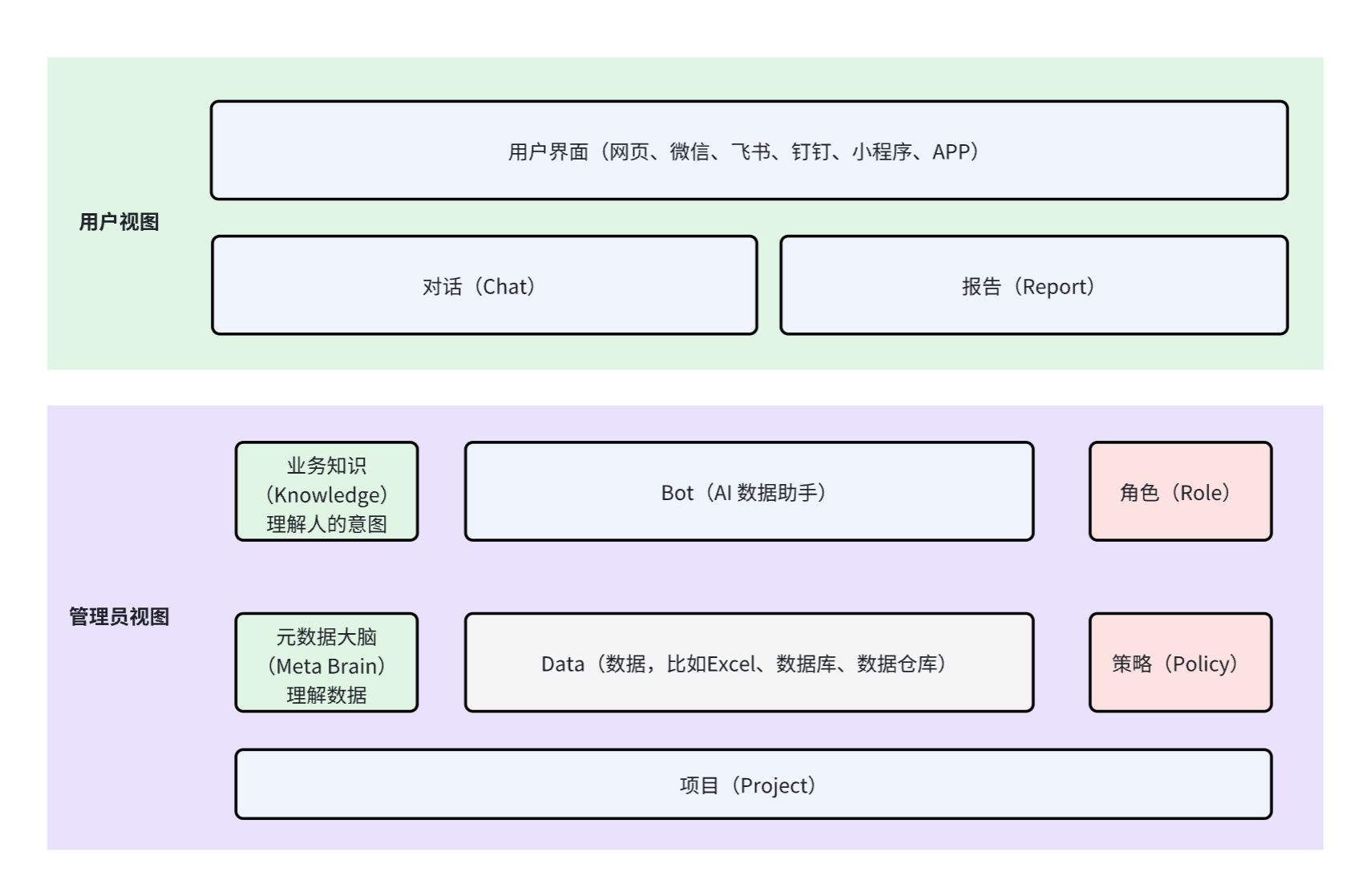Basic Concepts
AskTable is an AI data agent (AI Table Agent Platform) that provides enterprises with natural language-driven data querying and analysis capabilities. This article will introduce the core concepts and system components of AskTable from both the user perspective and the administrator perspective.

User Perspective
The user perspective primarily targets end users, emphasizing simplicity and efficient interaction.
Users can use AskTable through multiple interfaces (web, WeChat, Feishu, DingTalk, mini programs, APPs, etc.).
-
Chat Chat carries out AskTable's AI question-answering and data query capabilities. Users ask questions in natural language, and the system automatically parses the requirements, generates query logic, and returns results. For example, when a user inputs "the revenue situation of the previous quarter," AskTable will generate SQL queries or other retrieval logic and output structured answers.
-
Report Report carries out AskTable's AI analysis report capabilities. Users can automatically generate standardized analysis reports from query results, including tables, charts, and textual interpretations. This feature is suitable for business reviews, operational analysis, and presentation scenarios.
Users do not need to master database languages or BI tools to complete the entire process from asking questions to generating reports.
Administrator Perspective
The administrator perspective provides configuration and control capabilities, ensuring that AskTable can adapt to complex enterprise data environments and security needs. Main modules are as follows:
Business Knowledge (Knowledge)
- Used for inputting and managing internal corporate terminology, rules, and context information.
- Function: Help AskTable better understand natural language questions, improving the business relevance of answers.
Metadata Brain (Meta Brain)
- Used for managing and parsing metadata of underlying data, such as table structures, field definitions, and relationships between tables.
- Function: Ensure AskTable can automatically generate correct and executable SQL queries.
Data
- Used for connecting and managing various data sources, including Excel files, databases (such as MySQL, PostgreSQL), data warehouses (such as ClickHouse, StarRocks), etc.
- Function: Provide real data sources for queries and analysis.
Bot (AI Data Assistant)
- Used as a logical execution unit, equivalent to a task-oriented AI assistant.
- Function: Can be bound to data sources, knowledge, and roles to achieve customized Q&A and analysis.
Role
- Used to define the boundaries of permissions for different user groups.
- Function: For example, the sales role can only access sales-related data, and the finance role can only access finance-related data.
Policy
- Used for configuring granular access and security policies.
- Function: Includes data masking rules, field-level permissions, query restrictions, etc., to ensure data security and compliance.
Project
- Used as a management unit to organize data sources, knowledge, roles, policies, Bot, etc., uniformly.
- Function: Suitable for division based on departments, business lines, or specific scenarios, facilitating centralized management and permission allocation.
Summary
Through the user perspective and administrator perspective, AskTable meets the needs of "usability" and "controllability":
- For users, AskTable is a data assistant available anytime, anywhere.
- For administrators, AskTable is a configurable and manageable intelligent platform.
Ultimately, the goal of AskTable is to make data usage as natural as communication, enabling enterprises to quickly release data value.